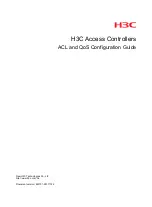
48VTR English 9/00 Ver. 2.7
8
9. FOURTH PROGRAMMING LEVEL PARAMETERS
Press and hold the SCROLL and RETURN keys simultaneously for 5 seconds to enter
this level from the third programming level. To return to normal operation at any time,
press the RETURN key.
LoCA and HiCA:
Low and High Input Calibration values. Refer to Section 10
“Calibration” for details.
tunE:
Auto Tuning ‘initialization mode’ selection. This parameter allows the user to
select when an Auto Tune session is automatically initiated by the controller.
Set this parameter as desired from the Table in Section 11.1. To activate Auto
Tune manually, refer to Section 11.2.
10. CALIBRATION
Important Note:
Calibration is rarely required and special equipment is needed to
perform calibrations. The calibration procedure cannot be aborted once the calibration
parameters are fully accessed. Do not initiate the calibration process until fully prepared
and qualified to do so. It is safe to scroll through the 4
th
programming level to view the
setting. Follow these steps only if prepared to do so.
a.
"LoCA" (Low Calibration) will be the first parameter to appear in this level.
b.
Remove the sensor from the controller's input screw terminals and connect a
Thermocouple (mV) or RTD (resistance) simulator to the controller's input
terminals. For a process DC input, use a 4-20mA or 1-5VDC signal, depending on
the input type of the controller.
c.
Apply the low input signal to the controller which corresponds to the range you are
using, i.e., for 4-20 mA inputs, 4 mA would now be applied to the controller.
d.
Use the UP/DOWN arrow keys to set the value, which will display for a 4mA input.
For example, for a 4-20mA input to display –50 to +150, set ‘LoCA’ to –50.
e.
Press and hold the RETURN key for at least 5 seconds and the parameter on the
display will change from "LoCA" to "HiCA" (High Calibration). The Low Calibration
value is now written into the controller's non-volatile memory.
f.
Apply the high input signal to the controller, which corresponds, to the range you
are using. For example, for a 4-20mA input controller, apply a 20mA signal.
g.
Use the UP/DOWN arrow keys to set the value that will display for a 20mA input.
For example, for a 4-20mA input to display –50 to +150, set ‘HiCA’ to +150.
h.
Press and hold the RETURN key for at least 5 seconds and the meter will return to
normal operation. The High Calibration value is now written into the controller's
non-volatile memory.
i.
Input a signal midway between the Low and High Calibration signals previously
applied and verify that the display indicates a value midway between the high
display (+150, in the above example) and the low display value (-50). For the
example, apply 12mA to d50.
11. AUTO TUNING
11.1 Auto Tune Initialization Modes
The Controller has the capability to start an Auto Tune session automatically. If this is
desired, select the conditions whereby an Auto Tune session will automatically begin
from Table III below. The controller defaults to Setting = ‘0’ (user initiates an Auto Tune
session). To manually initiate an Auto Tune session, follow the procedure in Section
11.2.
































